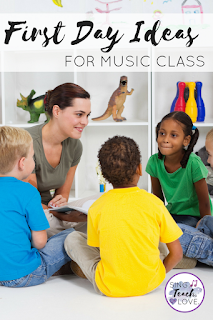Wrapping Paper
As the self-proclaimed Bulletin Board Lady, I am always on the look out for fabulous rolls of wrapping paper that will look great on bulletin boards. During the after Christmas sales I look for patterns that will work at other times of the year. Snowflake patterns look great in January. Red stripes and patterns work well for Valentine's Day in February. Think outside the season!
Paper Plates
I love using plates for movement activities all year round. I've used the to illustrate form, as percussion instruments and even for costumes. I purchase discounted plates during the after Christmas sales to use as bulletin board borders.
Tablecloths
I'm always on the look out for tablecloths that may work on the tables that I lay my programs on at winter concerts. They also look great on a bulletin board. During busy Decembers they have been the only thing I've had time to get up on a bulletin board.






























